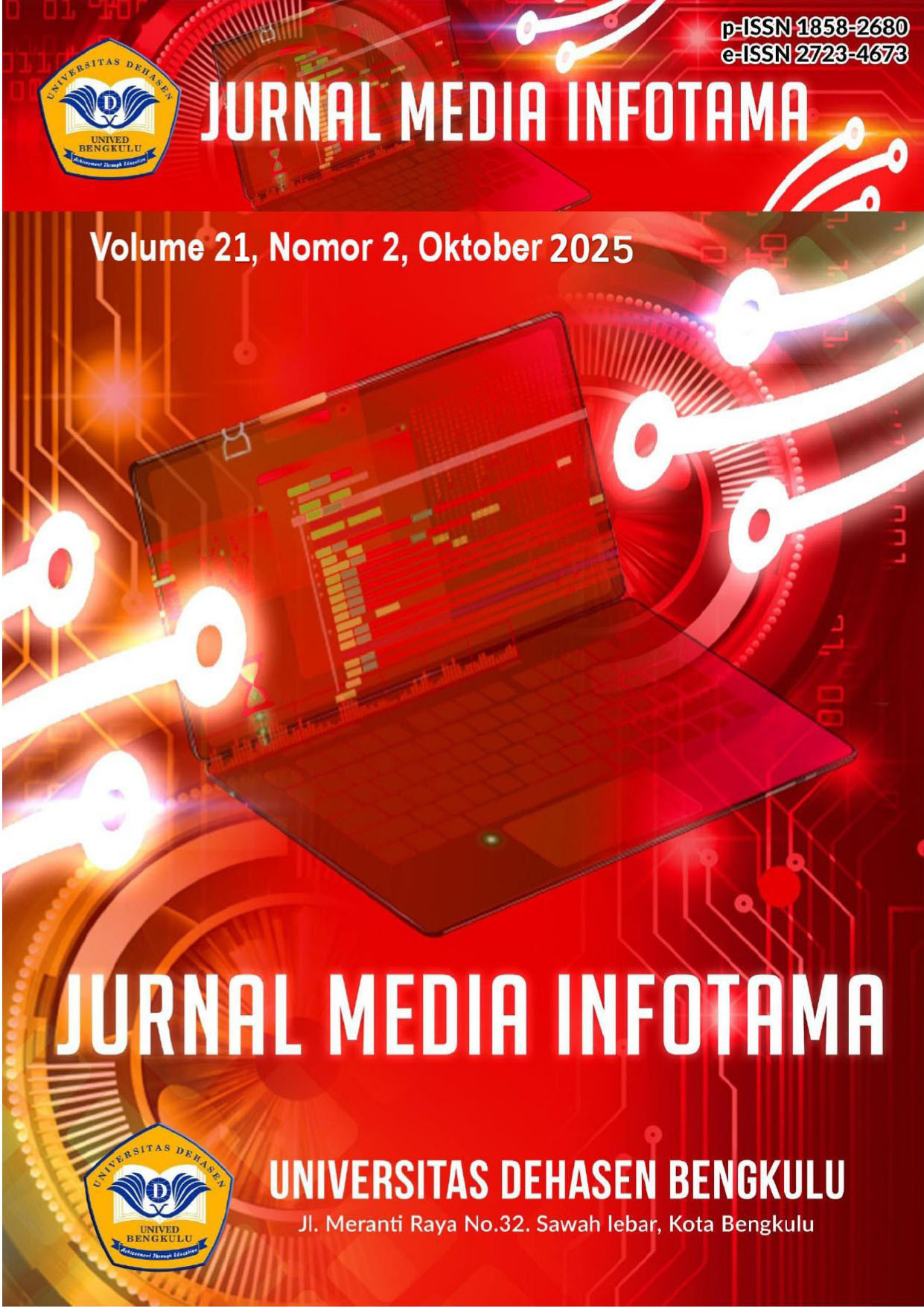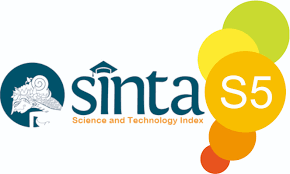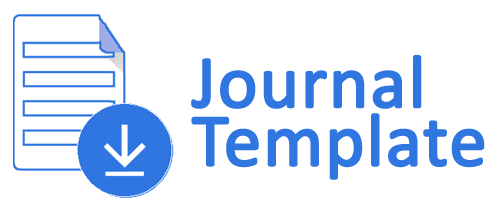Penerapan Metode K-Means Dalam Pengelompokan Data Siswa Berdasarkan Masalah Akademik Di SMA Negeri Selangit
Abstract
Selangit State High School does not yet have a system that can help identify students' academic problems. Until now, the school has only manually recorded each student's disciplinary violations as a point system by observing the violations committed by students, and at the end of the semester, all violation points are calculated. However, this process takes a considerable amount of time, as each student's violation points must be calculated individually, resulting in a lengthy process to determine the appropriate sanctions for each student. The application of the k-means method in grouping student data based on academic issues at Selangit State Senior High School can help the school obtain more specific information regarding students' academic issues and can be used as a benchmark in assisting with evaluations and counseling for students grouped based on academic issues. Based on the test data used in the odd semester of the 2024/2025 academic year, involving 30 students who committed violations, the results showed that cluster C1 had 12 students with sanctions in the form of reprimands, cluster C2 had 10 students with written warnings, cluster C3 had 0 students with suspension warnings, cluster C4 had 5 students with disciplinary action, and cluster C5 had 3 students.
Downloads
References
[2] Hariyono, R. C. S. et al., 2023. Buku Ajar Pengantar Basis Data. Jambi: PT. Sonpedia Publishing Indonesia.
[3] Helmud, E., 2021. Optimasi Basis Data Oracle Menggunakan Complex View Studi Kasus : PT. Berkat Optimis Sejahtera (PT.BOS) Pangkalpinang. Jurnal Informatika, Volume Vol.7 No.1 ISSN.2407-1730.
[4] Herlina, Rusman, A. D. P., Marlina & Suwardoyo, U., 2022. Penerapan Sistem Informasi Berbasis IT Pengolahan Data Rekam Medis Untuk Peningkatan Pelayanan di Rumah Sakit. Pekalongan Jawa Tengah: PT. Nasya Expanding Management ISBN:978-623-423-378-0.
[5] Isa, I. G. T., 2021. Buku Ajar Pemrograman Visual Dasar. ISBN:978-623-6906-82-8 penyunt. Pekalongan Jawa Tengah: Penerbit PT. Nasya Expanding Management (NEM).
[6] Jollyta, D., Ramdhan, W. & Zarlis, M., 2020. Konsep Data Mining Dan Penerapan. Yogyakarta: Penerbit Deepublish.
[7] Pakpahan, S., 2021. Pemrograman Visual I: Microsoft Visual Studio 2010. Medan: Penerbit Yayasan Citra Cita Milenial.
[8] Prianto, C. & Bunyamin, S., 2020. Panduan Pembuatan Aplikasi Clustering Gangguan Jaringan Menggunakan Metode K-Means Clustering. Cetakan Pertama penyunt. Bandung: Penerbit Kreatif Industri Nusantara.
[9] Rahayu, P. W. et al., 2024. Buku Ajar Data Mining. ISBN:978-623-8483-96-9 penyunt. Jambi: PT. Sonpedia Publishing Indonesia.
[10] Sinurat, Y. F., Masrizal & Irmayanti, 2024. Data Mining Pengelompokan Siswa Berprestasi Menggunakan Metode Clustering. ISBN:9786231154583 penyunt. Pekalongan Jawa Tengah: Penerbit NEM.
[11] Suprapto, U., 2021. Pemodelan Perangkat Lunak (C3) Kompentesi Keahlian : Rekayasa Perangkat Lunak Untuk SMK/MAK Kelas XI. Jakarta: Grasindo.
[12] Wahyudi, M., Masitha, Saragih, R. & Solikhun, 2020. Data Mining : Penerapan Algoritma K-Means Clustering dan K-Medoids Clustering. Medan: Penerbit Yayasan Kita Menulis.
[13] Wanto, A. et al., 2020. Data Mining : Algoritma Dan Implementasi. Medan: Yayasan Kita Menulis.
[14] Yendrianof, D. et al., 2022. Analisis dan Perancangan Sistem Informasi. Medan: Yayasan Kita Menulis.
Copyright (c) 2025 Chindy Asher; Jhoanne Fredricka, Rizka Tri Alinse

This work is licensed under a Creative Commons Attribution-ShareAlike 4.0 International License.
An author who publishes in Jurnal Media Infotama agrees to the following terms:The author holds the copyright and grants the journal the right of first publication of the work simultaneously licensed under the Creative Commons Attribution-Share Alike 4.0 License which allows others to share the work with acknowledgment of the work's authorship and initial publication in this journal.Submission of a manuscript implies that the submitted work has not been previously published (except as part of a thesis or report, or abstract); that it is not being considered for publication elsewhere; that its publication has been approved by all co-authors. If and when a manuscript is accepted for publication, the author retains the copyright and retains the publishing rights without limitation.
For new inventions, authors are advised to administer the patent before publication. The license type is CC-BY-SA 4.0.
MEDIA INFORMATION REVIEW: Journal of the Faculty of Computer Science is licensed under a Creative Commons Attribution-ShareAlike 4.0 International License.You are free to:Share
— copy and redistribute material in any medium or formatAdapt
— remix, modify and develop materialfor any purpose, even commercial.
The licensor cannot revoke this freedom as long as you follow the license terms












.png)


